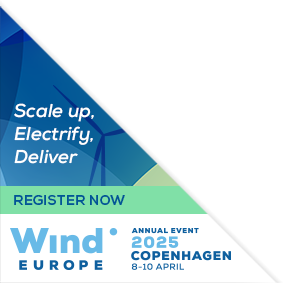Presentations
Siblings:
ProceedingsProgrammeSpeakersPostersContent PartnersPowering the FutureMarkets TheatreResearch & Innovation in actionStudent programmePresenters dashboard
Advancing wind turbine standards: DNV's comprehensive approach for loads and site conditions
José Simón-Donaire, Principal Specialist, DNV
Abstract
This document introduces DNV's upcoming new standard helping the industry with the most pressing challenges. Leveraging DNV's extensive experience in setting industry standards, this document aligns with the latest advancements in the wind energy sector. It introduces a novel sequential approach for load calculation and site condition assessments, offering a comprehensive and streamlined framework. While adhering to IEC 61400-1 Ed. 4 and IEC 61400-3-1 standards, the standard offers added value because it incorporates practical insights drawn from project experience. Furthermore, it acknowledges the rapid evolution of the wind energy industry, ensuring its relevance while improving clarity and usability. Key differentiators of this standard include its detailed focus on external conditions covering both onshore and offshore applications, covering wind extrapolation, atmospheric stability, and state-of-the-art insights on tropical cyclones. Important topics, such as snow and icing, sea/lake ice, seismic activity, and ship impact are further elaborated. Detailed guidance for integrated structural dynamics modelling and various time domain calculations approaches are newly added. It also introduces various wind turbine clustering methods, novel notions on machine learning-based surrogate models, and advanced control features like lidar assisted control (LAC) or wind farm flow control (WFFC), which are currently not covered in IEC standards. The standard's main objective is to guide industry stakeholders and to serve as a foundation for wind turbine design, verification, and certification. It focusses on onshore and bottom-fixed offshore wind turbines, however general requirements and guidance for loads and site conditions for floating wind turbines, offshore substations, and meteorological (met) masts can be derived. The standard sets the stage for more efficient design approach by offering a dynamic and responsive framework that meets the evolving needs of the wind energy industry.










